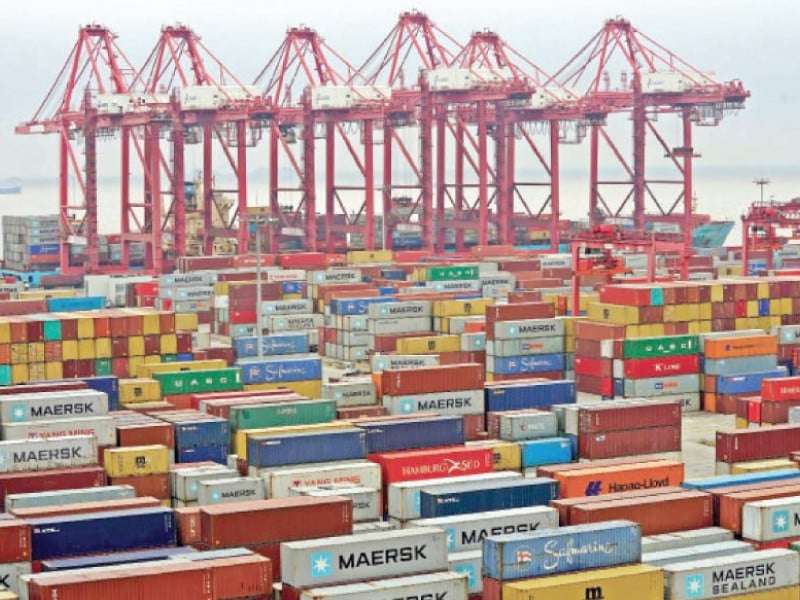Pakistan Sees 10.4% Rise in Exports to US; Remittances Hit New Highs in FY25.
In a promising turn for Pakistan’s trade and economic landscape, exports to the United States grew by 10.4% during the first eight months of the ongoing fiscal year (FY25), according to a report published by PTV World. This improvement, led chiefly by the textile and garments sector, reflects an encouraging rebound in the country’s export performance.
From July to February, total exports to North America climbed to $4.2 billion, showing a year-on-year growth of 9.7%. Notably, textile goods made up nearly 94% of the total export volume to the U.S., cementing their role as the backbone of Pakistan’s outbound trade.
Officials highlighted that this growth is partially the result of policy enhancements and support initiatives driven by the Special Investment Facilitation Council (SIFC). These reforms have been aimed at simplifying the investment process and removing bottlenecks in the export supply chain.
The export boost is seen as a timely uplift for Pakistan’s foreign exchange reserves, which, while showing signs of recovery, remain under strain. Analysts view the improvement as a signal that the country’s export industry is stabilizing and that international appetite for Pakistani goods is on the rise.
However, they also pointed out that future gains will hinge on the global economic climate and continued domestic efforts to enhance trade infrastructure.
Record-Breaking Remittances Signal Renewed Economic Strength
In parallel with the export revival, remittances to Pakistan reached an all-time high of $4.1 billion in March, according to the State Bank of Pakistan (SBP) Governor Jameel Ahmad. Speaking at the Pakistan Stock Exchange, Ahmad announced that foreign reserves were expected to surpass $14 billion by June, thanks to robust remittance inflows and an improved balance of payments.
February remittances stood at $3.12 billion, marking a 40% increase compared to the same month last year and a 3.8% rise over January. For the first nine months of FY25 (July–March), total remittances amounted to $28.07 billion — a substantial 33% year-on-year increase.
Data from brokerage firm AKD Securities revealed that the lion’s share of March’s remittances originated from:
- Saudi Arabia: $987 million
- UAE: $842 million
- UK: $684 million
- US: $419 million
Ahmad noted that despite a challenging agricultural season, the country’s GDP growth is expected to fall between 2.5% and 3%, slightly below the 4.2% projected had the agricultural output met targets.
Inflation Hits Historic Low, Reducing Pressure on Households
In a surprising development, March’s inflation rate dropped to just 0.7% year-on-year — the lowest figure since December 1965. This steep decline defied both market predictions and finance ministry projections, which had forecasted inflation to land between 1% and 1.5%.
The drop was largely credited to reduced prices in key areas such as wheat, fresh produce, and electricity. Lower inflation has provided relief to consumers and is seen as another positive indicator of Pakistan’s economic trajectory.
Looking ahead, Pakistan faces $26 billion in foreign debt repayments for FY25. However, Governor Ahmad assured that approximately $16 billion is anticipated to be rolled over or refinanced, thereby reducing short-term financial stress.
The International Monetary Fund (IMF), which provided a $7 billion bailout to help Pakistan navigate its 2023 financial crisis, expects the country’s GDP to rise steadily and reach 4.5% by 2029.
FAQs
1. What is driving the increase in Pakistan’s exports to the US?
The surge is primarily fueled by a strong performance in the textile and garment sectors, accounting for nearly 94% of exports to the US.
2. What role is the SIFC playing in export growth?
The Special Investment Facilitation Council has implemented reforms to ease trade barriers, attract investment, and streamline export procedures.
3. Why did remittances reach a record high in March?
March saw increased remittance activity, particularly from countries like Saudi Arabia, UAE, UK, and the US, due to seasonal factors and improved global economic conditions.
4. How is Pakistan addressing its foreign debt obligations?
Out of the $26 billion owed in FY25, approximately $16 billion is expected to be refinanced or rolled over, helping to ease fiscal pressures.
5. What contributed to the sharp drop in inflation in March?
Falling prices of staple foods and electricity charges played a major role in reducing inflation to a historic low of 0.7%.



